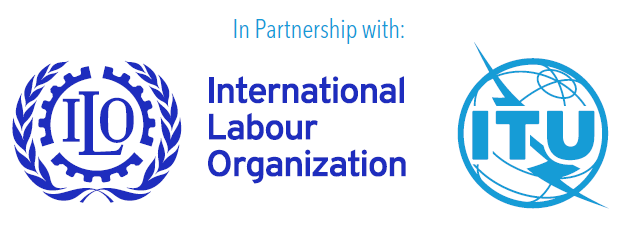Information and communication technologies (ICTs) have the potential to help build stronger communities and assist people to pursue their goals and ambitions, including in the world of work. Every person should have the right to benefit fully from the digital transformation, regardless of factors such as disability, gender, age, race or where they live.
Over 1 billion people in the world live with a disability, 80 per cent of whom are of working age. Yet, persons with disabilities are often at risk of discrimination and socio-economic exclusion, including in today’s digital society. The COVID-19 pandemic has exacerbated the challenges they face in access to essential services such as education and health, and in terms of employment opportunities.
Guaranteeing that ICT tools meet accessibility requirements is critical for persons with disabilities to enter and thrive in the labour market. ICT tools, however, are still too frequently designed and developed without accessibility requirements in mind. A lack of accessible digital content in many online job application and recruitment systems is one of the many barriers that persons with disabilities face in accessing employment opportunities.
Removing such obstacles throughout the recruitment process will enable persons with disabilities to compete for jobs in conditions of equality, whilst giving employers access to a larger talent pool and enhancing their chances of attracting the best candidates. Workplaces with greater accessibility tend to be more diverse and inclusive, which brings fresh ideas, skills viewpoints and innovation to the organization.
This Guidebook on accessibility of online job application and recruitment systems has been developed jointly by the International Telecommunication Union (ITU) and the International Labour Organization (ILO) to help employers understand the barriers that persons with disabilities may face when applying for a job online, and the accessibility and usability requirements that job portals and digital tools used in recruitment processes should meet to support the overarching goal of promoting inclusive employment.
To complement the guidebook, ITU and ILO have developed the self-paced e-learning course ‘Inclusive employment: How to ensure that online job applications and recruitment systems are accessible to all’ designed for all stakeholders (including public and private sector, trade unions, academia, civil society and international organizations). The course is particularly useful for individuals involved in the recruitment process of their organizations and maintenance of their job portals, who wish to enhance their knowledge on the topic of digital accessibility and their understanding of the principles of universal design which are fundamental to building inclusive online job applications and recruitment systems.
This collaborative effort also aims at supporting entities in the implementation of indicators 6 (Accessibility) and 13 (Employment) of the United Nations Disability Inclusion Strategy (UNDIS), which establishes the highest levels of commitment and a vision for the UN system on the inclusion of persons with disabilities.
We encourage all stakeholders to strengthen their endeavours to promote inclusive employment, retention and career advancement, by ensuring that their online job applications and recruitment systems are accessible and usable for all persons, including persons with disabilities.
We trust that this guidebook will be a useful contribution to those endeavours.
Sylvia Poll, Head of the Digital Society Division, Telecommunication Development Bureau, International Telecommunication Union
Chidi King, Chief of Gender, Equality, Diversity and Inclusion branch, International Labour Organization
